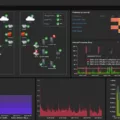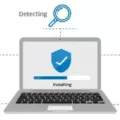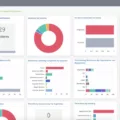An external vulnerability scan is an essential part of any business’s security strategy. It helps to identify and address any potential risks that may be present outside of the corporate network, allowing organizations to better protect their data and systems from malicious actors.
External vulnerability scans provide a comprehensive view of the organization’s attack surface, helping to identify known weaknesses in network structures, such as unpatched software, exposed services, and misconfigured devices. These scans are usually conducted by a PCI Approved Scanning Vendor (ASV) and are required by the Payment Card Industry Data Security Standard (PCI DSS).
The process of running an external vulnerability scan involves scanning your external IP addresses for known security vulnerabilities. This includes scanning for viruses and other malicious code, checking for open ports or services that can be exploited by attackers, and verifying that all security patches are up-to-date. The results of the scan will reveal any potential points of entry for cybercriminals and help you create an effective security strategy.
It is important to note that external vulnerability scans should be done on a regular basis as threats can change quickly, so it is essential to stay up-to-date with the latest trends in order to ensure your organization’s safety. Additionally, these scans should be carried out by trained professionals who understand how to interpret the results properly in order to make sure your organization is fully protected against cyberattacks.
Overall, an external vulnerability scan is an important part of ensuring the safety of your organization’s systems and data from cyber threats. By regularly running these scans, you will be able to identify potential vulnerabilities before they become major issues for your business.

Understanding External Vulnerability Scans
An external vulnerability scan is an important security measure that allows organizations to identify and resolve security risks on their external networks. It works by scanning all of the ports, devices, and applications that are accessible from outside of the network, looking for any weaknesses or vulnerabilities that could be exploited by attackers. By finding and addressing these vulnerabilities before they can be exploited, companies can avoid a wide range of potential security issues. External vulnerability scans also provide valuable insight into how well your organization’s external assets are protected. This information can help you make decisions on how to better secure your systems and data in the future.
Comparing External Scanning and Internal Scanning
An external scan is a type of vulnerability scan that looks for security flaws from outside an organization’s network. It is done from outside the corporate firewall by simulating an attack from the public internet, and it usually takes place before or at the same time as an internal scan. An internal scan, on the other hand, looks for weaknesses within the organization’s internal network. It is done from within the corporate firewall and can be used to validate whether any external threats have been successfully blocked by security protocols. Both external and internal scans are important for organizations to identify potential security vulnerabilities and protect their data, networks, and systems.
Responsibility for External Vulnerability Scanning
The responsibility for external vulnerability scanning typically falls on the merchant or service provider responsible for maintaining the cardholder data environment. To ensure compliance with PCI DSS requirements, merchants and service providers must engage a PCI Approved Scanning Vendor (ASV) to perform these external scans. ASVs are organizations that have been qualified by the Payment Card Industry Security Standards Council (PCI SSC) to validate that a particular organization is compliant with PCI DSS requirements.
Understanding PCI DSS External Vulnerability Scanning
PCI DSS external vulnerability scans are security scans performed outside of your network that detect any known weak points in the external structure of your network. These scans are done by certified third-party vendors and are designed to ensure that your networks and systems meet the PCI Data Security Standard (PCI DSS). The scan will look for weaknesses such as unpatched software, open ports, or incorrect configuration settings that could allow malicious actors access to your network. If any vulnerabilities are detected, it is important to take corrective action immediately in order to protect the security of your networks and systems.
Comparing Internal and External Vulnerability Scans
An internal vulnerability scan is designed to identify potential security risks within your organization, while an external vulnerability scan is designed to detect any security issues that could exist outside of your organization’s network perimeter.
An internal vulnerability scan is used to identify any weaknesses in the systems, applications, or hardware that is connected to your organization’s internal network. It can also be used to detect any unauthorized changes or malicious activity on the network. An internal vulnerability scan looks for issues such as misconfigured settings, weak passwords, and vulnerable open ports.
An external vulnerability scan is used to detect any security holes in the systems and applications that are exposed to the internet. This type of scan looks for vulnerabilities such as open ports, unpatched software/systems, and weak passwords. It can also be used to detect any malicious activity occurring outside of your organization’s network perimeter.
In summary, an internal vulnerability scan examines the security posture of systems and applications within an organization’s internal network while an external vulnerability scan checks for security exposures from external sources such as the internet. Both types of scans are important in order to ensure a secure environment and reduce the risk of attack or data loss.
Detecting External Threats with a Vulnerability Scanner
A vulnerability scanner is used to detect external threats by scanning a target attack surface for known flaws and weaknesses. The scanner will compare details about the target attack surface against its database, which references coding bugs, packet construction anomalies, default configurations, and potential paths to sensitive data that can be exploited by attackers. It will look for any suspicious activity or open ports that could be used to gain unauthorized access to the system. Additionally, it will check for outdated software or vulnerable applications that may be susceptible to exploitation. Finally, the vulnerability scanner will also assess the internal security of the system to identify any weaknesses that could be utilized by malicious actors. By continuously monitoring the attack surface and alerting administrators of potential threats, a vulnerability scanner helps organizations stay secure and protect vital information from being compromised.
Do Hackers Utilize Vulnerability Scanners?
Yes, hackers often use vulnerability scanners to find and exploit weaknesses in networks. Vulnerability scanners are automated tools that scan for common security flaws and weaknesses in a computer system. They are capable of detecting thousands of known vulnerabilities, including configuration issues, missing patches, password policy deficiencies, system misconfigurations, and other potential security risks. Additionally, some vulnerability scanners can also be used to detect malicious software and other suspicious activities on a network. Vulnerability scanning is an important part of any hacker’s toolkit as it helps them identify gaps in security that they can exploit.
Conclusion
In conclusion, an external vulnerability scan is a critical part of any company’s security protocol. It helps identify and address vulnerabilities outside of their network, which can help prevent attacks from cyber criminals. The PCI DSS requires two independent methods of PCI scanning, including both internal and external scans. By performing an external vulnerability scan, companies can ensure that their networks are secure and compliant with the PCI DSS standards.








